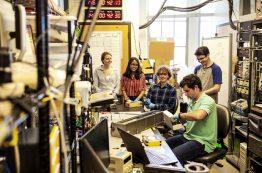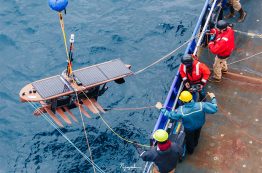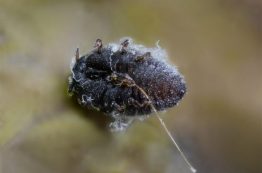A University of Washington satellite smaller than a loaf of bread will, if all goes well, launch this weekend on its way to low-Earth orbit. It will be the first student-built satellite from Washington state to go into space. HuskySat-1 is one of seven student-built satellites from around the country scheduled to launch at 9:30 a.m. Eastern time Saturday, Nov. 2, from NASA’s Wallops Flight Facility on the Virginia coast.
Read more at UW News »Creepy, slimy and flat-out gross: marine edition
To commemorate the season of all things spooky, gross and disturbing, we’ve compiled a list of some of the creepiest creatures to be found in the waters of the Pacific Northwest. To kick things off, we dip our toe into the salty waters of the Salish sea, where UW’s Friday Harbor Laboratories (FHL) are situated. These labs make the ideal setting to study the marine world, and provided us with no shortage of horrors to include in this list.
Read more »Precision mapping with satellite, drone photos could help predict infections of a widespread tropical disease
Satellite images, drone photos and even Google Earth could help identify communities most at risk for getting one of the world’s worst tropical diseases. A team led by the University of Washington and Stanford University has discovered clues in the environment that help identify transmission hotspots for schistosomiasis, a parasitic disease that is second only to malaria in its global health impact.
Read more at UW News »UW team sending autonomous surfboard to explore Antarctic waters
This week, a surfboard arrived in Antarctica. Not only was it missing a surfer, but the unique board was covered in parts that let it move independently and measure the surrounding seawater. The University of Washington project will first use the Wave Glider to investigate the summer conditions near Palmer Station on the Antarctic Peninsula, to better understand how the warming ocean interacts with ice shelves that protrude from the shore.
Read more at UW News »Old friends and new enemies: How evolutionary history can predict insect invader impacts
About 450 nonnative, plant-eating insect species live in North American forests. Most of these critters are harmless, but a handful wreak havoc on their new environment, attacking trees and each year causing more than $70 billion in damage. The problem is, scientists often don’t know which insect will emerge as the next harmful invader. A team led by the University of Washington, drawing largely on the evolutionary history of insect-plant interactions, has developed a way to understand how nonnative insects might behave in their new environments.
Read more at UW News »





